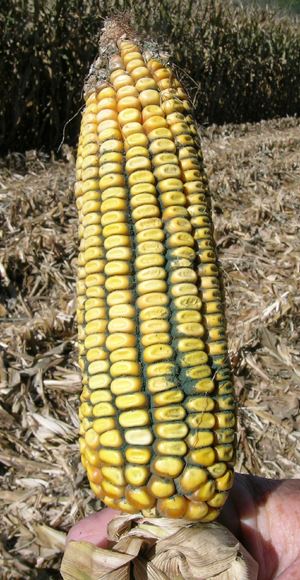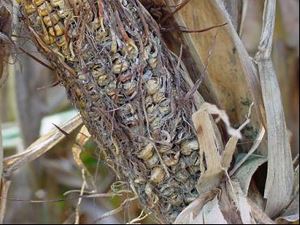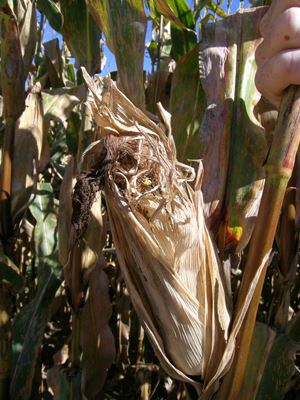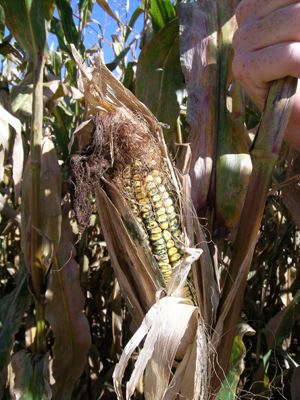Trichoderma Ear Rot Of Corn
LEXINGTON, KY.
Trichoderma ear rot is one of the less common ear rots of corn in
Kentucky. However, occasionally we do see severe outbreaks of this
disease in sporadic fields.
This ear rot produces abundant growth of dark green to bluish-green
fungal material between kernels, often involving much of the ear (Figure
1).
Sometimes, in severely affected ears, kernels germinate within the husk (Figure 2).
Occasionally, Trichoderma ear rot is confused with other greenish ear
rots, such those caused by Penicillium spp., Aspergillus spp., and
Cladosporium spp.
Here are a few things we have observed in outbreaks of Trichoderma ear rot:
1. Diseased ears are commonly associated with injury to the
developing ear, such as that caused by feeding by flocks of birds
(Figures 3 & 4). Injury to the developing ear or husk may be a
factor that
encourages severe Trichoderma ear rot to develop. Such injuries would
provide avenues for windblown spores and rainfall to enter the ear,
setting the stage for later ear rot development.
2. Certain species of Trichoderma may produce mycotoxins, including
T-2 toxin. This mycotoxin is generally uncommon in foods in the USA but
can be more common elsewhere. In two cases where we tested badly
diseased grain for possible toxins, including T-2 toxin, no mycotoxin
was detected.
Where Trichoderma ear rot is severe, farmers are recommended to
harvest and dry the grain as soon as is feasible. Moldy grain should be
stored separately from good grain, and it should be utilized as quickly
as possible. ∆
DR. PAUL VINCELLI: Extension Plant Pathologist, University of Kentucky

Figure 1. Trichoderma ear rot of corn.

Figure 2. Corn ear with Trichoderma ear rot, with some kernels germinating in the husk.

Figure 3. Corn ear showing bird damage.

Figure 4. Same ear as in figure 3, with husk leaves partially removed.
Photos: Paul Vincelli, UK